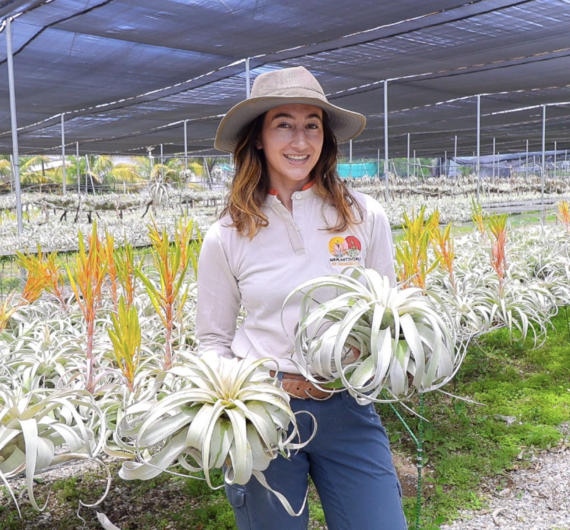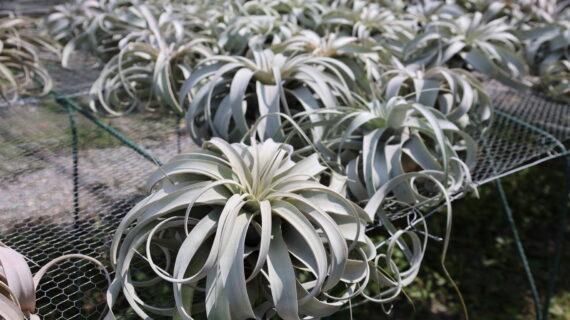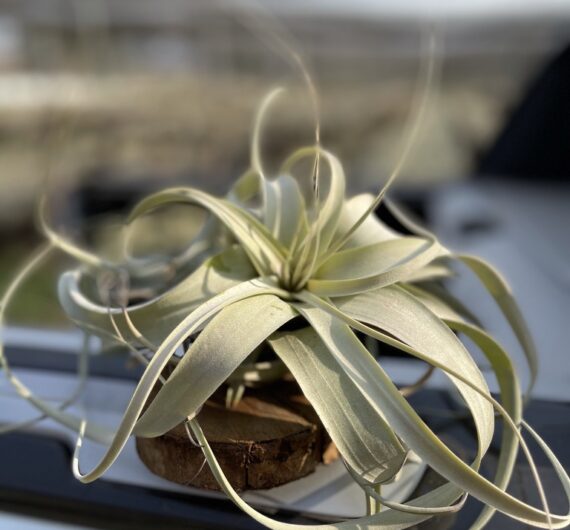
If there’s one air plant that truly stands out in the world of Tillandsias, it’s Tillandsia xerographica. Known as the “Queen of Air Plants,” this stunning species captivates plant enthusiasts with its regal appearance and low-maintenance nature. Its elegant, silvery-green leaves and impressive size make it a perfect centerpiece for any plant collection or decor setup. But what makes this air plant so special, and how do you care for it? Let’s take a closer look at the magnificent Tillandsia xerographica and everything you need to know about this iconic air plant.
What is Tillandsia Xerographica?

Tillandsia xerographica is one of the largest and most iconic species in the Tillandsia genus, which includes over 650 different species of air plants. Its name is derived from the Greek words “xeros” (dry) and “graphica” (writing or drawing), which roughly translates to “dry drawing.” This name reflects its natural ability to thrive in arid environments.
Unique Features
- Size and Shape: Tillandsia xerographica is famous for its large size and distinctive rosette shape. Its wide, curling leaves create a sculptural, symmetrical form that can grow up to 3 feet in diameter in ideal conditions.
- Leaf Color: The leaves are silvery-green and coated with trichomes, tiny hair-like structures that help the plant absorb moisture and nutrients from the air.
- Slow Growth: Xerographica is a slow-growing plant, but its longevity and ability to mature into a magnificent specimen make it a favorite among plant collectors.
- Blooming Cycle: Like all Tillandsias, xerographica blooms only once in its lifetime. When it does, it produces a stunning, tall flower spike in shades of red, pink, or orange, lasting several months. After blooming, the plant focuses on producing pups, or baby plants, ensuring the cycle continues.
Natural Habitat
Tillandsia xerographica is native to the dry forests and semi-arid regions of Central America, particularly in Guatemala, Mexico, El Salvador, and Honduras. In its natural habitat, it grows as an epiphyte, meaning it attaches itself to trees, rocks, or other surfaces rather than growing in soil.
How It Survives in the Wild
In the wild, xerographica relies on its trichomes to capture water from rainfall, morning dew, and humidity in the air. Its ability to store water in its thick, fleshy leaves allows it to survive long periods of drought, making it perfectly adapted to arid conditions.
Why is Tillandsia Xerographica Called the "Queen of Air Plants"?

Tillandsia xerographica has earned the nickname “Queen of Air Plants” for several reasons:
- Majestic Appearance: Its large, sculptural form and silvery-green leaves make it the most striking and regal-looking air plant.
- Versatility: Xerographica’s elegant shape makes it a versatile decor element, whether placed in a minimalist modern setting or a lush boho-inspired space.
- Longevity: This air plant can thrive for years with proper care, making it a worthy investment for any plant lover.
Why is Tillandsia Xerographica Called the "Queen of Air Plants"?
When purchasing a xerographica, it’s crucial to buy from a reputable source to ensure the plant has been propagated sustainably. Overharvesting in the wild has threatened some populations of Tillandsia xerographica, making it essential to choose cultivated plants from trusted nurseries.
If you’re looking for the best place to buy Tillandsia xerographica, look no further than Air Plants World—the top global exporter of air plants. As a leading nursery, Air Plants World is committed to ethical propagation and high-quality plants. With their sustainable practices, you can be confident that your xerographica has been grown responsibly and will thrive in your home.
Air Plants World offers a variety of healthy, beautiful Tillandsia xerographica specimens to suit your needs. They also provide expert advice to help you care for your new plant with confidence.
Tillandsia xerographica is truly a showstopper in the world of air plants. Its majestic size, elegant shape, and easy-care nature make it a favorite among plant enthusiasts and interior designers alike. Whether you’re new to air plants or looking to add a striking focal point to your collection, the “Queen of Air Plants” is sure to impress.